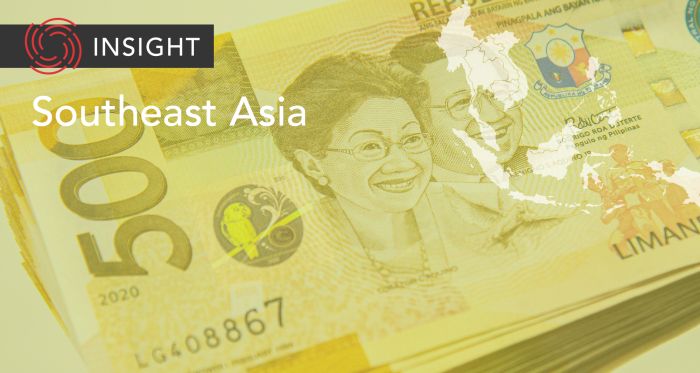The Takeaway
On July 18, Philippines President Ferdinand Marcos Jr. signed the controversial C$12-billion (500 billion Philippine Pesos) Maharlika Investment Fund Act 2023 (MIF) into law, creating the Philippines' first sovereign wealth fund. Marcos claims the fund will stimulate the economy, but experts and the public think otherwise; they fear the fund’s governance structure and unclear rules could lead to corruption and misuse of public funds. Critics have also questioned the source of seed funding and the timing of the MIF when the Philippines is battling high inflation and debt, and a trade deficit.
In Brief
The MIF is a state-owned investment fund that will be initially bankrolled by the national government and government financial institutions and managed by the Maharlika Investment Corporation (MIC), a government corporation created through the law. The MIF empowers the government to use the fund to invest in priority infrastructure projects and other financial assets, including foreign currencies, fixed-income instruments, corporate bonds, joint ventures, mergers and acquisitions, and commercial real estate.
According to Marcos' economic managers, the MIF is the brainchild of Marcos, who wants to invest in mega projects – including physical and digital connectivity, agriculture, health, and clean energy – that often get rejected by Congress. With the MIF, Marcos hopes to boost the country's socio-economic development, attract investment, and reduce reliance on foreign debt for infrastructure projects.
Implications
Source of seed funding raises public concerns. Unlike sovereign wealth funds where money is sourced from excess revenues or natural resource extraction profits, the MIF’s initial seed funding of C$3 billion (125 billion Philippine Pesos) will come from three primary sources: C$1.2 billion (50 billion Philippine Pesos) from the national government, including 100 per cent of dividends of the Bangko Sentral ng Pilipinas (central bank), C$1.2 billion (50 billion Philippine Pesos) from the Land Bank of the Philippines, and C$602 million (25 billion Philippine Pesos) from the Development Bank of the Philippines. Critics have argued that the diversion of investible funds to the MIF risks destabilization of the central banks. With inflation at a 14-year-high this year and an outstanding national debt of C$341 billion (14.15 trillion Philippine Pesos), lawmakers and experts are wary that the MIF will put a significant strain on public coffers and potentially run national banks dry.
Economists warn of governance risks. Economic professors from the University of the Philippines School of Economics had urged the Marcos administration to address the “serious risks” the fund poses to the economy and public sector. One of the red flags they highlighted is undue political influence on the governance structure, as all MIC board members are presidential appointees. Members include the secretary of finance as chair, the presidents of the Land Bank of the Philippines and the Development Bank of the Philippines, and the managing MIC’s CEO, alongside two regular directors and three independent directors.
Marcos’ direct involvement in designing the MIF and the proposal of the original bill to congress by his son Ferdinand ’Sandro’ Alexander Marcos III, his cousin and House Speaker Ferdinand Martin Romualdez, and Romualdez's wife Yedda Marie has led to further criticism that the MIF is a family affair. Marcos’s MIF is reminiscent of his father’s policies in the 1970s and ‘80s spurring an aggressive infrastructure push, one of the reasons the Philippines was plunged into a debt crisis from which it hasn’t recovered. The public is, therefore, skeptical, and many fear a similar trajectory for the country with the implementation of the MIF.
Public opinion split over the MIF. The Social Weather Stations, a Philippines social research institute, recently published a report based on a survey of 1,200 Filipinos between March 26 and 29. The survey shows that 51 per cent of Filipinos expect little or no benefit from the MIF, while 46 per cent believe it would be beneficial. In terms of awareness about the MIF, only 20 per cent feel sufficiently informed about the new fund, while 80 per cent had little or no knowledge of the MIF.
What’s Next
MIF rules and board appointments:
On August 1, Finance Secretary Benjamin Diokno announced that the implementing rules and regulations of the MIF are expected to be formulated by mid-August. The board of directors, including the CEO of the newly created MIC, will be appointed by September, and the MIF will be fully operational by the first quarter of 2024.
Prospects of the fund:
The success of the fund will largely depend on the people managing it. Marcos has guaranteed that the fund will be managed professionally with sufficient safeguards. In his recent state visit to Malaysia on July 27, he pitched the MIF to Malaysian business leaders who have expressed interest in the fund. It's plausible that the fund may garner interest from other public and private entities as Marcos wins the trust and confidence of prospective investors.
• Produced by CAST’s Southeast Asia team: Stephanie Lee (Program Manager); Alberto Iskandar (Analyst); and Saima Islam (Analyst).




